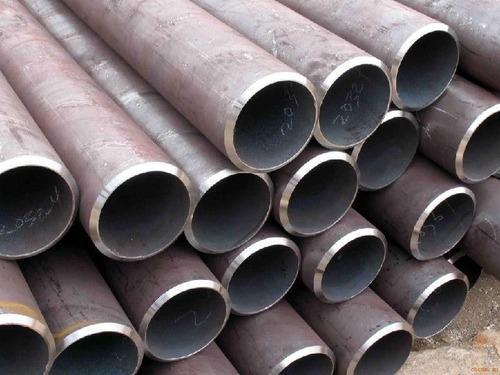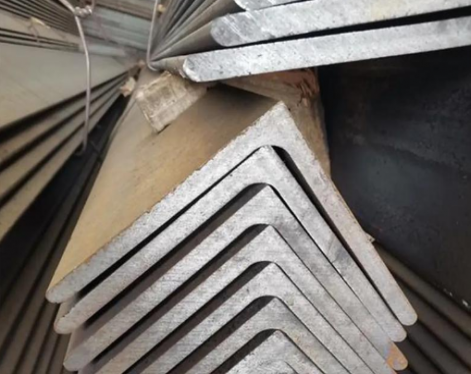Steel pipes are vital components in various industrial and commercial applications, used for conveying fluids and gases. When choosing steel pipes for a particular application, it is crucial to consider factors such as pressure, temperature, and the nature of the conveyed material. Two commonly used types of steel pipe are Schedule 20 and Schedule 40,such as Sch 40 black pipe. In this comparison, we will delve into the characteristics, applications, and considerations for each type to help you make an informed decision.
1.Schedule 20 Steel Pipe
Schedule 20 steel pipe is characterized by its relatively thin wall thickness compared to other schedules. This thinness makes it suitable for applications where lower pressures and lighter weight are desired. Schedule 20 pipes are typically used in non-critical low-pressure applications, such as residential plumbing, light-duty industrial processes, and certain low-pressure agricultural and irrigation systems.
The thinner wall of Schedule 20 pipes makes them more cost-effective and easier to handle during installation compared to pipes with thicker walls. However, it is important to note that they may not be suitable for high-pressure or heavy-duty applications due to their reduced structural integrity and pressure-bearing capacity.
2.Schedule 40 Steel Pipe
On the other hand, Schedule 40 steel pipe is known for its thicker walls and higher pressure-bearing capacity. These pipes are designed to withstand higher pressures and are widely used in applications where strength and durability are critical. Schedule 40 pipes are commonly utilized in industrial processing, water distribution systems, high-pressure irrigation, and oil and gas transmission lines.

The increased wall thickness of Schedule 40 pipes enhances their resistance to bending, stretching, and other forms of mechanical stress, making them suitable for demanding applications. While Schedule 40 pipes may incur higher material and installation costs compared to Schedule 20 pipes, their superior strength and performance characteristics make them indispensable in many industries.
3.Comparative Analysis
When comparing Schedule 20 and Schedule 40 steel pipes, several key differences emerge:
(1)Wall Thickness
The most apparent distinction between the two schedules is the wall thickness. Schedule 20 pipes have thinner walls, while Schedule 40 pipes feature thicker walls.
(2)Pressure Rating
Schedule 40 pipes have a higher pressure rating than Schedule 20 pipes. They are capable of withstanding greater internal pressures without deformation or failure.
(3)Weight and Cost
Due to their thinner walls, Schedule 20 pipes are lighter and often more cost-effective than Schedule 40 pipes. However, the trade-off is reduced strength and pressure-handling capabilities.
(4)Applications
Schedule 20 pipes are suitable for low-pressure, non-critical applications, whereas Schedule 40 pipes are employed in high-pressure, heavy-duty scenarios where structural integrity is paramount.
4.Considerations for Selection
When deciding between Schedule 20 and Schedule 40 steel pipes, it is imperative to consider the specific requirements of your application:
(1)Operating Pressure
Determine the maximum pressure that the pipe will be subjected to. If the application involves high pressures, Schedule 40 pipes are the appropriate choice.
(2)Material Compatibility
Consider the nature of the materials being conveyed through the pipes. Corrosive or abrasive substances may necessitate the use of Schedule 40 pipes for their enhanced durability.
(3)Installation Constraints
uate the installation environment and any weight restrictions. Schedule 20 pipes may be preferred in situations where weight is a concern.
(4)Long-Term Durability
Assess the expected lifespan and maintenance requirements of the system. For long-term, high-stress applications, investing in Schedule 40 pipes may lead to lower maintenance and replacement costs over time.
In conclusion, both Schedule 20 and Schedule 40 steel pipes serve distinct purposes and are tailored to different operational requirements. Understanding the nuances of each schedule and carefully assessing the demands of your specific application will enable you to select the most suitable steel pipe for your needs. Whether prioritizing cost-effectiveness and lightweight design (Schedule 20) or prioritizing strength and pressure-handling capabilities (Schedule 40), the right choice will ensure optimal performance and longevity for your piping system.
Related Reading:
1.Schedule 20 Steel Pipe
Schedule 20 steel pipe is characterized by its relatively thin wall thickness compared to other schedules. This thinness makes it suitable for applications where lower pressures and lighter weight are desired. Schedule 20 pipes are typically used in non-critical low-pressure applications, such as residential plumbing, light-duty industrial processes, and certain low-pressure agricultural and irrigation systems.
The thinner wall of Schedule 20 pipes makes them more cost-effective and easier to handle during installation compared to pipes with thicker walls. However, it is important to note that they may not be suitable for high-pressure or heavy-duty applications due to their reduced structural integrity and pressure-bearing capacity.
2.Schedule 40 Steel Pipe
On the other hand, Schedule 40 steel pipe is known for its thicker walls and higher pressure-bearing capacity. These pipes are designed to withstand higher pressures and are widely used in applications where strength and durability are critical. Schedule 40 pipes are commonly utilized in industrial processing, water distribution systems, high-pressure irrigation, and oil and gas transmission lines.

The increased wall thickness of Schedule 40 pipes enhances their resistance to bending, stretching, and other forms of mechanical stress, making them suitable for demanding applications. While Schedule 40 pipes may incur higher material and installation costs compared to Schedule 20 pipes, their superior strength and performance characteristics make them indispensable in many industries.
3.Comparative Analysis
When comparing Schedule 20 and Schedule 40 steel pipes, several key differences emerge:
(1)Wall Thickness
The most apparent distinction between the two schedules is the wall thickness. Schedule 20 pipes have thinner walls, while Schedule 40 pipes feature thicker walls.
(2)Pressure Rating
Schedule 40 pipes have a higher pressure rating than Schedule 20 pipes. They are capable of withstanding greater internal pressures without deformation or failure.
(3)Weight and Cost
Due to their thinner walls, Schedule 20 pipes are lighter and often more cost-effective than Schedule 40 pipes. However, the trade-off is reduced strength and pressure-handling capabilities.
(4)Applications
Schedule 20 pipes are suitable for low-pressure, non-critical applications, whereas Schedule 40 pipes are employed in high-pressure, heavy-duty scenarios where structural integrity is paramount.
4.Considerations for Selection
When deciding between Schedule 20 and Schedule 40 steel pipes, it is imperative to consider the specific requirements of your application:
(1)Operating Pressure
Determine the maximum pressure that the pipe will be subjected to. If the application involves high pressures, Schedule 40 pipes are the appropriate choice.
(2)Material Compatibility
Consider the nature of the materials being conveyed through the pipes. Corrosive or abrasive substances may necessitate the use of Schedule 40 pipes for their enhanced durability.
(3)Installation Constraints
uate the installation environment and any weight restrictions. Schedule 20 pipes may be preferred in situations where weight is a concern.
(4)Long-Term Durability
Assess the expected lifespan and maintenance requirements of the system. For long-term, high-stress applications, investing in Schedule 40 pipes may lead to lower maintenance and replacement costs over time.
In conclusion, both Schedule 20 and Schedule 40 steel pipes serve distinct purposes and are tailored to different operational requirements. Understanding the nuances of each schedule and carefully assessing the demands of your specific application will enable you to select the most suitable steel pipe for your needs. Whether prioritizing cost-effectiveness and lightweight design (Schedule 20) or prioritizing strength and pressure-handling capabilities (Schedule 40), the right choice will ensure optimal performance and longevity for your piping system.
Related Reading:









